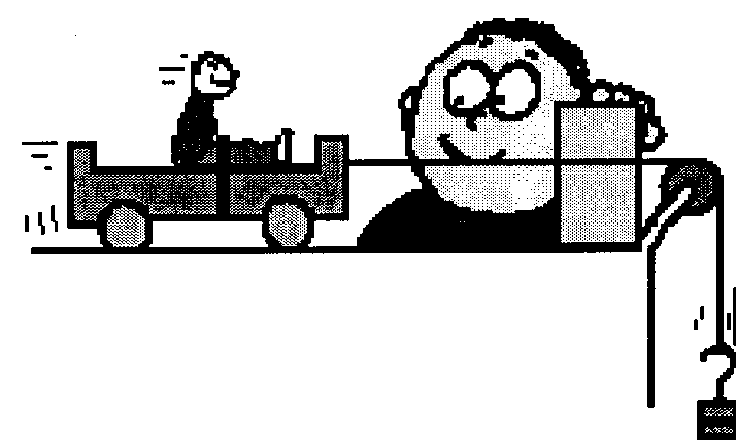Karachi American School
Physics Block G
Newton's Laws
Newton's First Law: Newton's first law states that objects stay at their current states unless acted upon by an unbalanced force. (Applies to bjects at rest as well as objects in motion.
Newton's Third Law: Every action has an equal and opposite reaction.
FAB= -FBA
Newton's Second Law: Net Force applied is directly proportional to acceleration.
Fnet=(m)(a)
This law is also referred to as the law of inertia. If an object is at rest it will continue to stay in the said state unless acted upon externally. In the same manner if an object is in motion at a constant velocity and direction it will proceed unless an unbalanced forces changes it's state of motion.
A few examples would be:
A cup of coffe was at rest and you attempted to stir it
You are roller blading and someone pushes you in the opposite direction.
A bowl of soup is in motion around a lazy susan and you attempt to stop it.
A net force of an object which is the force acting upon an object generates acceleration which is directly proportional to the measure of the net force. The acceleration influenced upon by two distinct forces- net force (directly proportional) an mass (inversely proportional). The equation can be manipulated.
Fnet=(m)(a)
A=Fnet/mass
As Fnet increases, acceleration increases
As mass increases, acceleration decreases.
When two forces act upon one another, the magnitue and size of force one equals force two. For each action presented there is a force equal in size and opposite in direction. Examples are in existence all around us in our everyday lives.
Example: Two skaters exerted equal forces upon one another. Skater 1 applies a normal force to the right and skater 2 applies a normal force in the opposite direction to the left.

